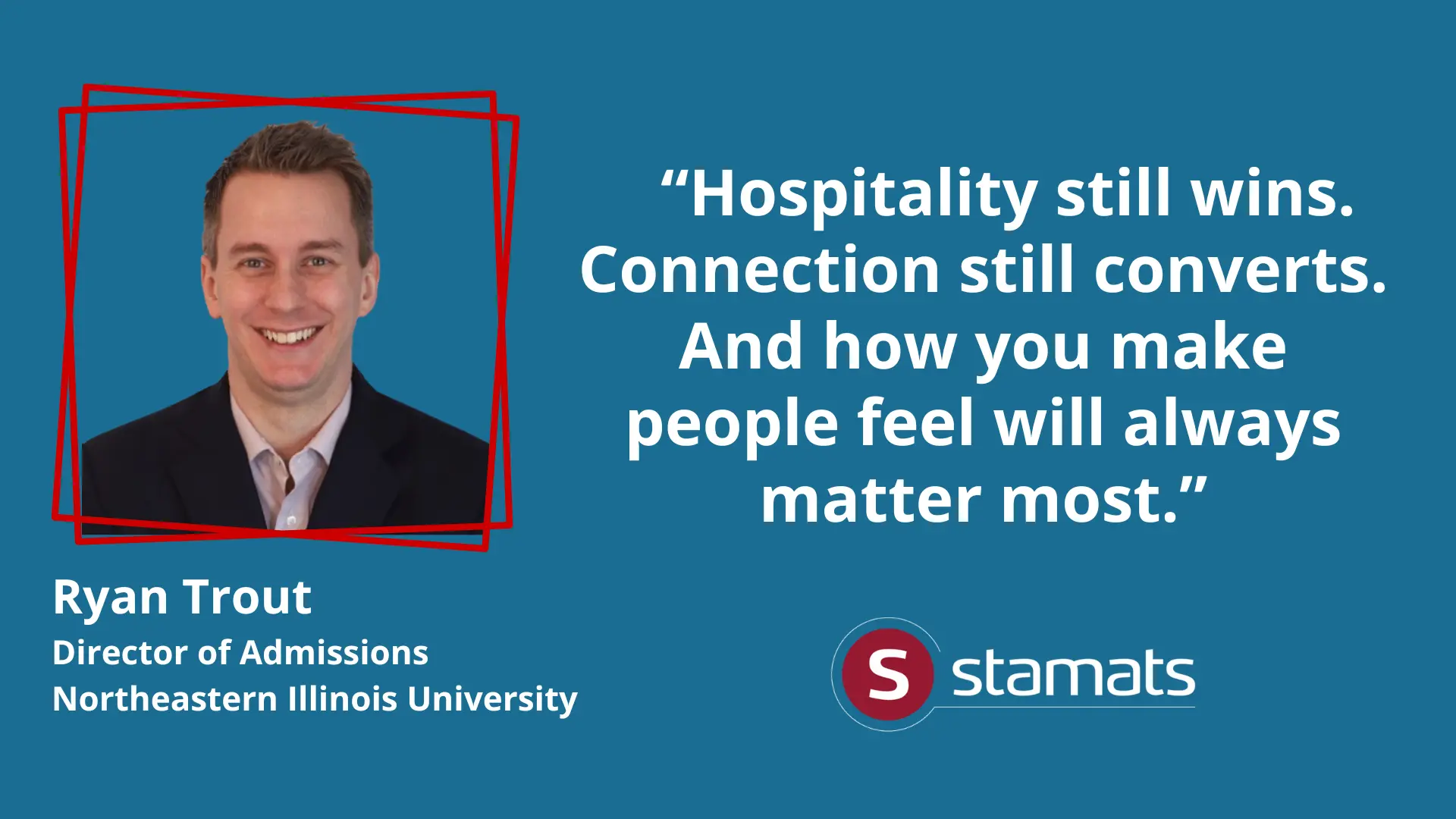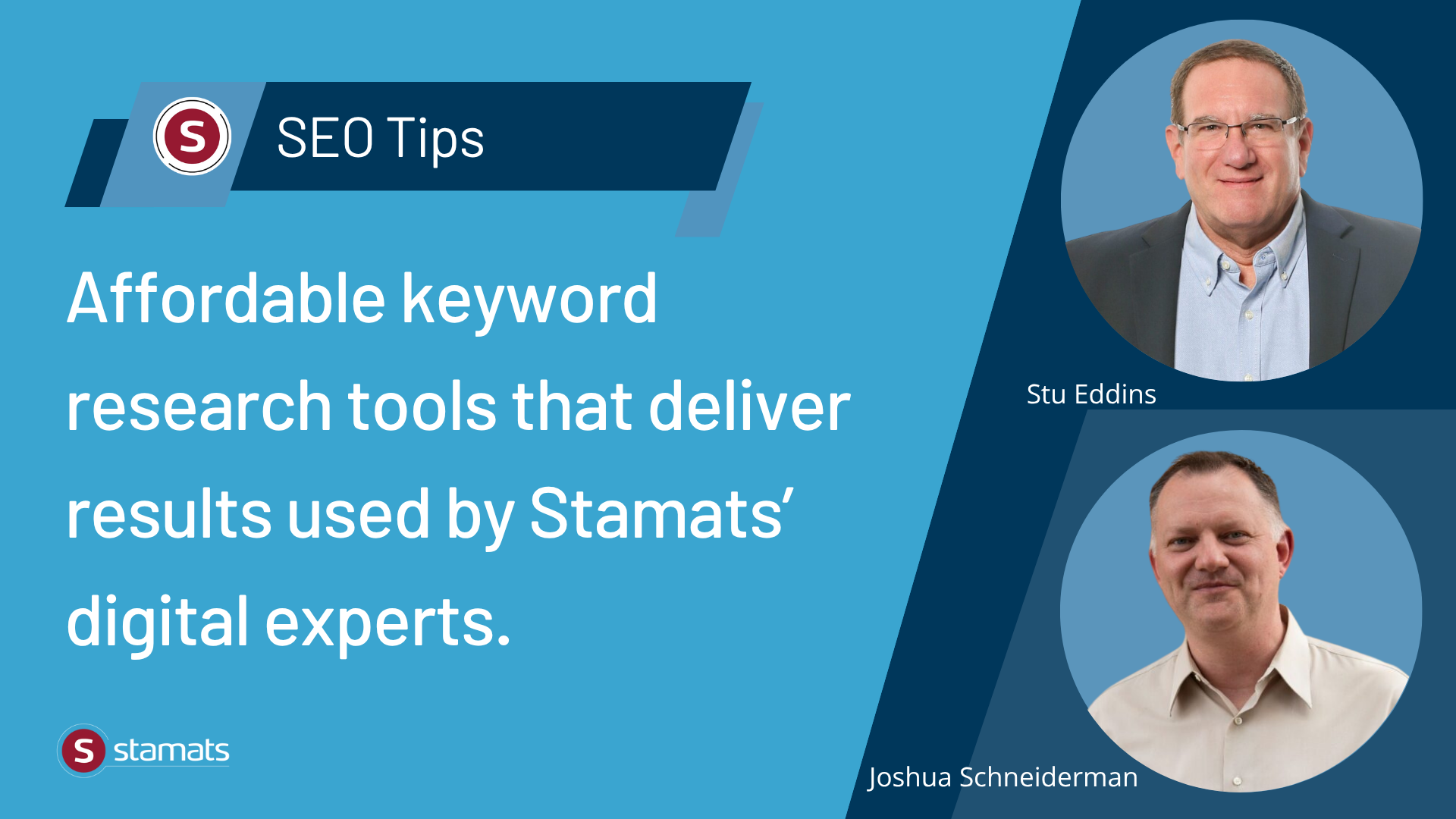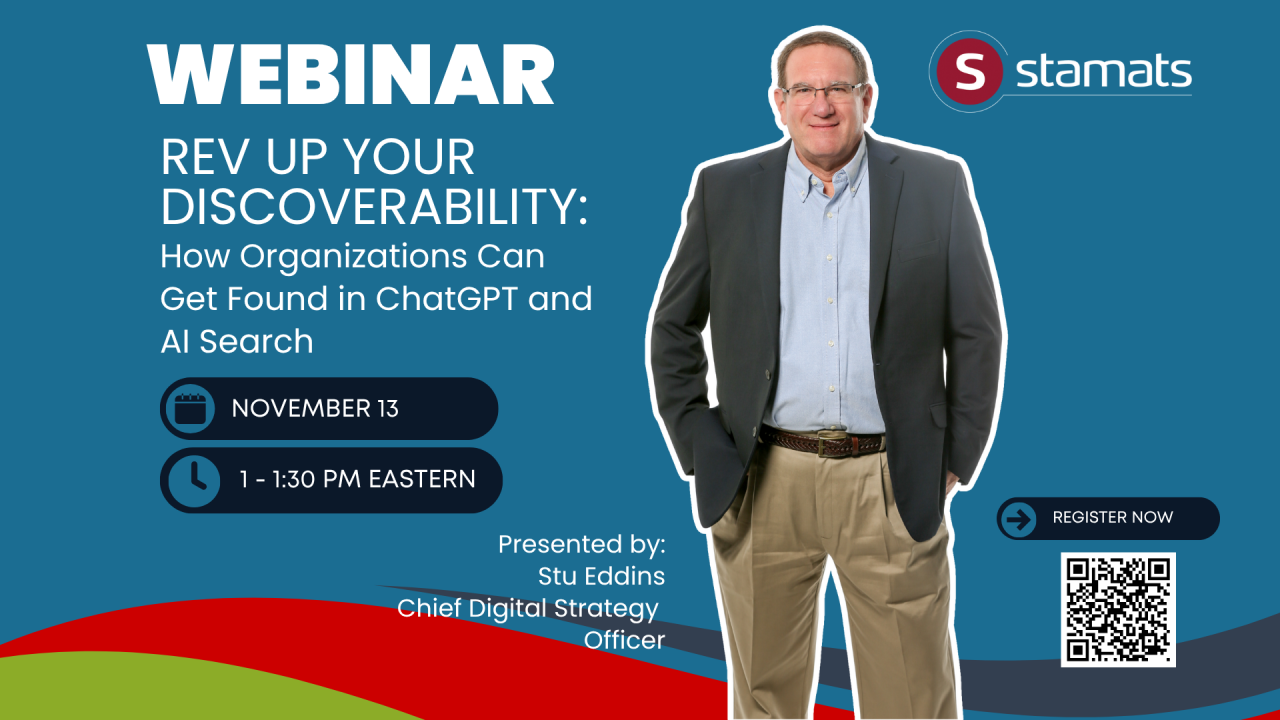Written by
on

Five years ago, Cody Watson, Chief Marketing & Communications Officer at William & Mary’s School of Business, joined our podcast to share how his team launched its Flex MBA program using data-driven, multi-channel marketing.
At the time, the MBA space was already competitive. Since then, it has become one of the most crowded corners of higher ed, shaped by the rise of online players, new micro-credential providers, and rapidly changing student expectations.
Fast-forward to 2020, and Watson and his team have evolved their approach, offering valuable lessons for institutions looking to stand out in a noisy market while delivering real value for students.
Lead with Differentiation, not Volume
Watson notes that today’s prospective MBA students are savvier than ever. They’re not just comparing price points; they’re comparing outcomes, value, and community. That’s why his team shifted away from trying to outcompete on volume or visibility.
“We’re not the biggest school, so how can we be the most intentional in our market?” Watson says.
Rather than trying to be everywhere, they focus on what truly sets William & Mary apart:
- A tight knit, highly engaged community
- Faculty who blend scholarship and practice
- A brand rooted in history and personal connection.
W&M’s Executive Partners program serves as a great example of being intentional.
Key takeaway: If you can’t be the biggest, be the clearest. Pick the 2–3 qualities that truly differentiate your flex or part-time program and make them unmistakable in your marketing.
Want to see this approach in action? See how we helped North Greenville University clarify its brand and stand out in a crowded market: Vibrant Brand. Epic Experience.
Build Community into the Enrollment Funnel
Flex and part-time MBA students often juggle careers, families, and other commitments. They don’t just want a credential, they want belonging. To deliver that, Watson’s team has embedded community and peer connection into every stage of the funnel.
They run a corporate partners program that connects local employers, students, and alumni from the part-time, executive, and online MBA programs. Every year, they host networking events so employers and students can build relationships within the William & Mary ecosystem.
“Don’t just hear it from us—the folks ‘selling this thing’—hear it from your cohort, your peer, your alum,” Watson says.
Key takeaway: Move beyond student testimonials. Activate alumni, corporate partners, and current students as trusted voices who can offer authentic social proof.
Recognize that ROI has Replaced Flexibility as the Top Driver
In 2020, flexibility was the headline feature of the Flex MBA. Today it’s expected.
“It’s not the headline driver any longer,” Watson says. “What we’re hearing is that it’s outcomes.”
Students want a clear return on their investment of time, money, and energy. They want to know if an MBA will accelerate their career, open new doors, expand their network, or build new skills.
Key takeaway: Market your flex program not as an alternative format, but as a career accelerator. Use data, alumni stories, and post-graduation outcomes to make the ROI tangible.
Put Data in the Driver’s Seat
Back in 2020, data was part of the team’s marketing toolbox.
“Now it’s more front seat… it’s helping you drive your strategy,” Watson explains. His team uses data not just to track click-through rates, but to:
- Predict which students will succeed in the program
- Personalize communication based on intent signals
- Tie channel performance to quality enrollments and long-term student success
Key takeaway: Stop chasing vanity metrics. Build your data practice around quality, not just quantity — and connect it to outcomes.
Related reading: Doing Enrollment Marketing Differently with Audience Data
Treat AI as a Precision Multiplier
Watson is quick to clarify: AI hasn’t replaced their marketing strategy: “We like to think of the AI tools as multipliers instead of a magic bullet.”
The team at William & Mary uses AI to:
- Personalize at scale
- Predict who is most likely to convert
- Deliver the right content in the right channel at the right time
- Understand how prospective students are using AI to research programs, and ensure their content surfaces there
Key takeaway: Use AI to sharpen your strategy, not shortcut it. Focus on precision, relevance, and orchestration across the student journey.
Meet Students Where They are and Match the Platform
Short-form video has been a breakout tactic for Watson’s team, and they’re doing it strategically.
“Don’t just put it on your .edu and hope people come to you, go to where the videos are being consumed.”
His team has achieved success with YouTube Shorts, TikTok, Instagram Reels, and even Reddit. The key is to respect the identity and expectations of each platform and tailor the message accordingly.
Key takeaway: Platform-native content wins. A single video repurposed everywhere won’t resonate — shape your message for each space.
Want to elevate your video strategy? Explore our guide to crafting platform-native content that captures attention. Read our social video storytelling article.
Evolving Perceptions of Online MBAs
Before COVID, online MBAs were often seen as less rigorous than on-campus degrees. That’s no longer the case.
“Students now view the modality as a matter of their preference and not as a quality indicator,” Watson says.
His team treats online, hybrid, and in-person as the same degree, with the same quality of access to faculty, peer connection, and support.
Key takeaway: Don’t treat your online or hybrid program as a separate tier. Students expect parity, and they’ll notice when it’s missing.
Stay Nimble, Because Student Behavior Will Keep Changing
Looking back, Watson says the biggest lesson of the past five years is how fast student behavior can shift: “Don’t underestimate how fundamentally student behaviors will change—and how quickly they’ll change.”
Digital transformation went from a future project to a baseline expectation almost overnight. The key, he says, is building teams and systems that are nimble enough to adapt as behavior evolves.
Key takeaway: Don’t aim for the perfect five-year strategy. Build flexible systems, stay close to your audience, and be ready to pivot.
Key Lessons to Take Away
Watson and his team at William & Mary have proven that you don’t need to be the biggest program to thrive in a competitive MBA market. Instead, you need clarity about who you are, what makes your program valuable, and how to communicate that with precision.
For any school running a flex, hybrid, or part-time MBA program, its journey offers a great example—one built on data, community, personalization, and the courage to evolve.
If your institution is looking to strengthen your flex, hybrid, or part-time program marketing, our team at Stamats can help. We partner with higher ed marketers to build data-driven strategies, redesign websites, streamline enrollment funnels, and create the kind of content that drives real results.


